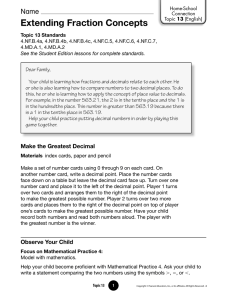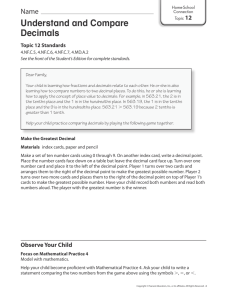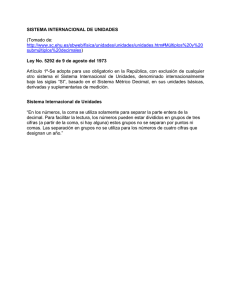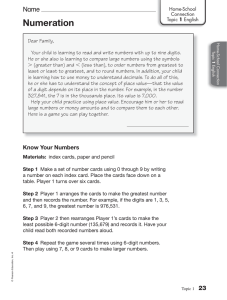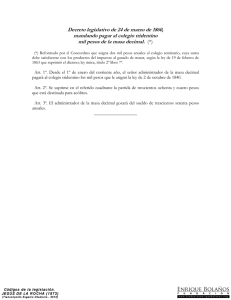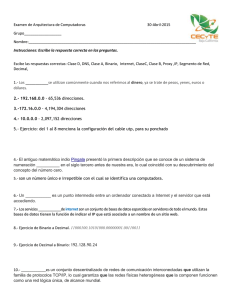Scott Foresman Addison Wesley, enVision Math
Anuncio
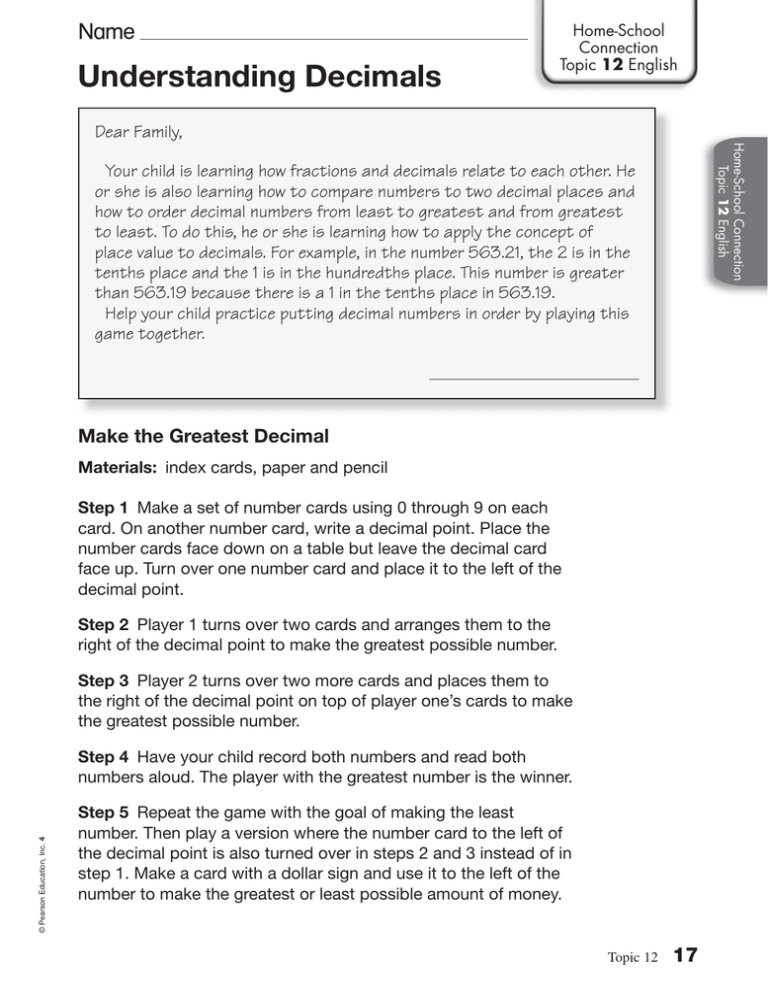
Name Understanding Decimals Home-School Connection Topic 12 English Home-School Connection Topic 12 English Dear Family, Your child is learning how fractions and decimals relate to each other. He or she is also learning how to compare numbers to two decimal places and how to order decimal numbers from least to greatest and from greatest to least. To do this, he or she is learning how to apply the concept of place value to decimals. For example, in the number 563.21, the 2 is in the tenths place and the 1 is in the hundredths place. This number is greater than 563.19 because there is a 1 in the tenths place in 563.19. Help your child practice putting decimal numbers in order by playing this game together. Make the Greatest Decimal Materials: index cards, paper and pencil Step 1 Make a set of number cards using 0 through 9 on each card. On another number card, write a decimal point. Place the number cards face down on a table but leave the decimal card face up. Turn over one number card and place it to the left of the decimal point. Step 2 Player 1 turns over two cards and arranges them to the right of the decimal point to make the greatest possible number. Step 3 Player 2 turns over two more cards and places them to the right of the decimal point on top of player one’s cards to make the greatest possible number. © Pearson Education, Inc. 4 Step 4 Have your child record both numbers and read both numbers aloud. The player with the greatest number is the winner. Step 5 Repeat the game with the goal of making the least number. Then play a version where the number card to the left of the decimal point is also turned over in steps 2 and 3 instead of in step 1. Make a card with a dollar sign and use it to the left of the number to make the greatest or least possible amount of money. Topic 12 17 Nombre Estimada familia: Su hijo(a) está aprendiendo cómo se relacionan las fracciones y los números decimales. También está aprendiendo a comparar números de hasta dos decimales y a ordenar números decimales de menor a mayor y de mayor a menor. Para hacerlo, él(ella) está aprendiendo a aplicar el concepto de valor de posición a los decimales. Por ejemplo, el número 563.21 tiene un 2 en el lugar de las décimas y un 1 en el de las centésimas; así, es mayor que 563.19 porque en este último hay un 1 en el lugar de las décimas. Ayude a su hijo(a) a que practique el ordenar los números decimales haciendo juntos este juego. Formar el decimal mayor Materiales: tarjetas de fichero, papel y lápiz Paso 1 Haga un conjunto de tarjetas de números con un número consecutivo del 0 al 9 en cada una. En otra tarjeta, escriba un punto decimal. Coloque las tarjetas de números boca abajo sobre la mesa, pero dejen a la vista la del punto decimal. De vuelta a una tarjeta y ubíquela a la izquierda del punto decimal. Paso 2 El(La) jugador(a) 1 da vuelta a dos tarjetas y las acomoda a la derecha del punto decimal para formar el mayor número posible. Paso 3 El(La) jugador(a) 2 da vuelta a dos tarjetas más y las coloca a la derecha del punto decimal, por encima de las tarjetas del(de la) jugador(a) 1, para formar el mayor número posible. Paso 4 Pida a su hijo(a) que anote ambos números y que los lea en voz alta. El ganador es el jugador que tiene el número mayor. Paso 5 Repitan el juego con el objetivo de formar el número menor. Luego jueguen una versión en la que den vuelta a las tarjetas de números que van a la izquierda del punto decimal en los pasos 2 y 3, en lugar de hacerlo en el 1. Hagan una tarjeta con el símbolo de dólar y colóquenla a la izquierda del número para formar la mayor o la menor cantidad posible de dinero. 18 Topic 12 © Pearson Education, Inc. 4 Home-School Connection Topic 12 Spanish Entender las fracciones Home-School Connection Topic 12 Spanish
